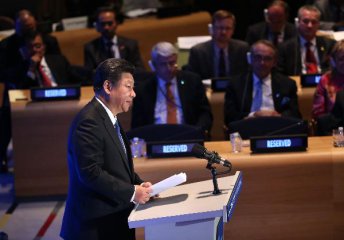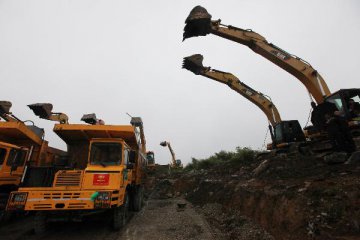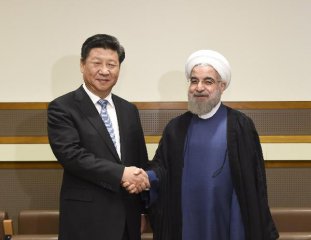
Construction of charging facilities is a key to development of the new energy vehicles. With policies and funds put into place, the whole industry in China will embrace huge opportunities for development.
In September 1-28, the new energy vehicle index compiled by Wind, an information provider in China, increased 8.28 percent. During the same period, the Shanghai composite index fell 3.28 percent.
In particular, since mid September, the Wind new energy vehicle index, lithium battery index and the charging pole index increased 15.51 percent, 12.86 percent and 16.87 percent, respectively.
-- Favorable turn for construction of charging facilities
The lagging construction of charging facilities in China has restricted development of the new energy vehicles, but now a favorable turn is coming.
On September 23, a State Council meeting decided that all new residential complexes should ensure that all parking lots have charging facilities or space for such facilities, while no less than 10 percent of parking lots in large public buildings or public car lots should have charging facilities.
China will build more charging facilities for electric vehicles and unify standards so that all vehicles can use all charging stations. The government will focus on increasing the number of charging stations and uniform standards for charging ports, said Zheng Shanjie, deputy head with the National Energy Administration.
All electric car makers should comply with China's new standard when it is released in making their charging posts, Zheng said, adding that the U.S. company Tesla is actively involved in defining the standard, and will remold its cars in accordance.
Currently, with the industry outlook becoming clear, many private companies are accelerating their distribution in the charging facility field from network construction to facility operation.
For example, the Nari Technology (600406.SH) rolled out the new CEV1102 alternating current charging pole for use in public places.
--- Opportunities for investors in new energy vehicle industrial chain
Recently, many institutional investors have keenly perceived investment opportunities in the new energy vehicle industrial chain. China's leading new energy vehicle and battery maker BYD (002594.SZ; 01211.HK) announced to release more new energy vehicle models one after another in the future. These models include plug-in SUV Tang, mini plug-in SUV Song and Yuan.
The company estimated that sales volume of new energy vehicles would grow fast with the increase of new energy vehicle models and new battery output capacity. SAIC Motor (600104.SH) planned to launch electric CUV (car-based utility vehicle), said the company's president Chen Zhixin, adding that the company will also gradually install plug-in hybrid technology to all its self-owned series of products.
Listed companies in the new energy vehicle industrial chain, including Shenzhen Deren Electronic Co., Ltd. (002055.SZ), Zhongshan Broad-Ocean Motor Co., Ltd (002249.SZ), and Wanxiang Qianchao (000559.SZ) also increased efforts to develop the new energy vehicle related business. The new energy vehicle industry has been elevated to the national strategy.
According to the country's development plan for the energy-saving and new energy vehicle industry, by 2020, production capacity of the blade electric vehicle (BEV) and plug-in hybrid vehicle in China will reach 2 million units with accumulative sales exceeding 5 million units, showing the huge space for development of the new energy vehicle industry, said Chen Guo, an analyst of the GF Securities (000776.SZ).






















Latest comments